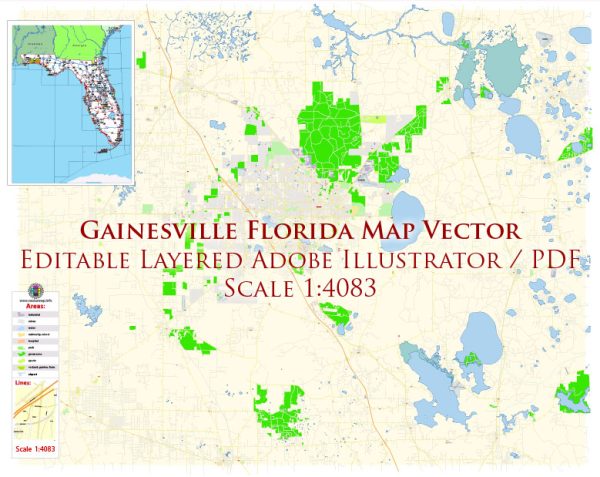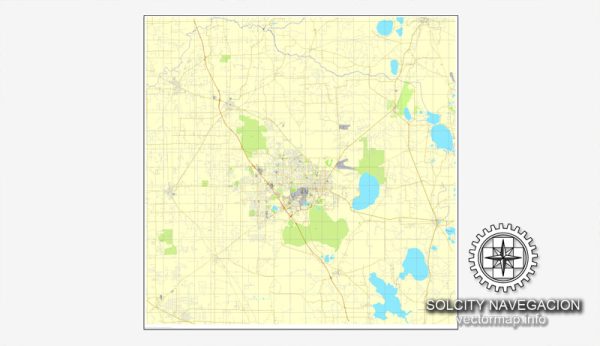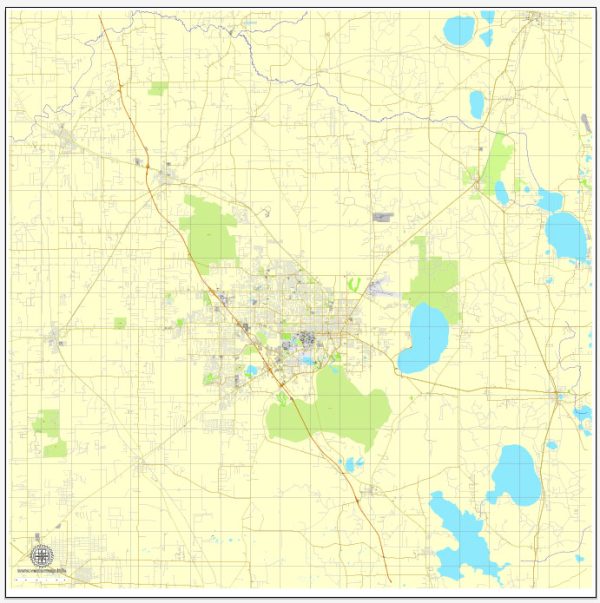Gainesville, Florida, has a rich history of urban development that reflects the broader historical trends of the United States. Here is an overview of the key stages in Gainesville’s urban development:
- Early Settlement (19th Century): Gainesville was originally inhabited by Native American peoples, including the Timucua. The area attracted European settlers in the 19th century, and the city was established in 1854. The city’s early growth was influenced by the development of transportation routes, including railroads.
- Civil War and Reconstruction (1861-1865): Like many Southern cities, Gainesville was affected by the Civil War. The post-war Reconstruction period brought challenges, but the city began to recover in the late 19th century. Agriculture, particularly citrus farming, played a significant role in the local economy.
- Early 20th Century: The 20th century brought significant changes to Gainesville. The University of Florida was founded in 1906, contributing to the city’s growth and establishing it as a center for education and research. The university’s presence has been a major driver of the local economy and culture.
- Mid-20th Century: Gainesville experienced growth and development in the mid-20th century, driven in part by the post-World War II economic boom. The city’s infrastructure expanded, and suburbanization became a prominent trend. The development of shopping centers and residential areas marked this period.
- Civil Rights Movement: Like many cities in the South, Gainesville played a role in the Civil Rights Movement. Activists worked to end segregation, and the city underwent changes in the 1960s as a result of these efforts.
- Late 20th Century and Beyond: The latter half of the 20th century saw continued growth in Gainesville, with the expansion of the university and the development of technology and healthcare sectors. The city became known for its cultural amenities, outdoor recreation opportunities, and a diverse community.
- 21st Century: In recent years, Gainesville has continued to evolve as a hub for education, innovation, and culture. The city has invested in infrastructure and sustainability initiatives. The presence of tech companies, startups, and research facilities has contributed to a dynamic and diverse economy.
- Cultural and Natural Amenities: Gainesville’s urban development also reflects a commitment to preserving cultural and natural resources. The city boasts parks, cultural institutions, and a vibrant arts scene that contribute to its unique character.
Overall, Gainesville’s history of urban development is a story of growth, change, and adaptation to economic, social, and cultural shifts, with a focus on education, technology, and community engagement shaping its trajectory.




 Author: Kirill Shrayber, Ph.D.
Author: Kirill Shrayber, Ph.D.